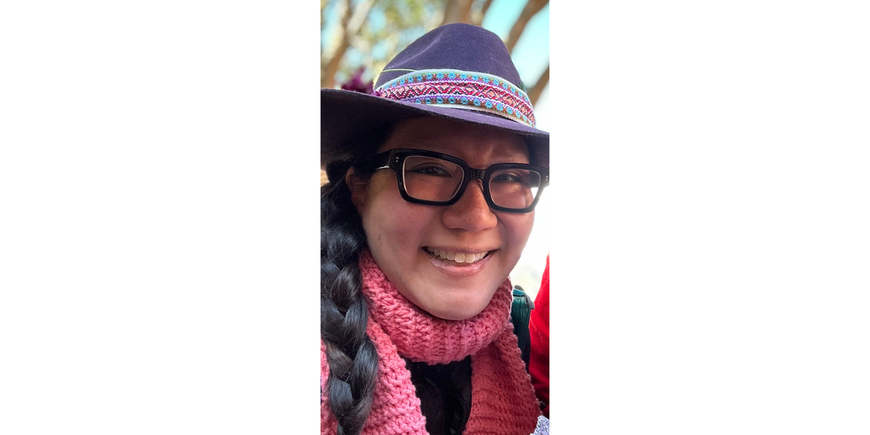Faculty Feature: Dr. Elizabeth Sumida Huaman
Dr. Elizabeth Sumida Huaman is the outgoing Interim Chair of American Studies (2023-2024), former Director of Graduate Studies in American Studies (2021-2023), and Professor in the College of Education and Human Development (CEHD) at the University of Minnesota, Twin Cities. She holds a B.A. from Dartmouth College, Ed.M. from the Graduate School of Education at Harvard University, and Ed.D. from the Teachers College at Columbia University. Most recently, Professor Sumida Huaman co-edited Indigenous research design: Transnational perspectives in practice with Dr. Nathan D. Martin, which “explores how researchers reimagine research paradigms, frameworks, designs, and methods” (Canadian Scholars, 2023).
Tell us about your current research and/or book project.
Right now, I have a handful of edited book and monograph projects, one of which is going to press soon. It’s called Edgewalkers and the westernized university, and it’s a co-edited collection that was inspired by my experiences of being a first-generation college student and Indigenous person ambling through academia and learning that I am committed to very different places and causes than are typically rewarded within this system. That project, and many others that I devote my time to, holds a theme of (dis)connection, and asks how institutions and our role in play a part in separating people from themselves, from each other, from lands and more than human communities. With authors from around the world and my co-editors, we think about how academic disciplines and fields of research further secure universities as part of the structure of coloniality, but most importantly, we tell stories that are produced by awareness and awakenings and the many possibilities of how people in those structures can change them. My other book projects are heart-projects and include collaborations with Native people primarily in the Americas where we have entered into long-term relationship-building. Those are projects of conversation and mutual synergies of reclaiming what we were taught respectively by and in our home communities, so they reflect the privilege to be able to work directly with Indigenous community members who come from places around the world where they are dealing with things that I as a Wanka and Quechua person feel imminently–environmental harms, loss of family members, and our knowledges and cultural systems compromised. That work really is privileged because the extractive capitalist value systems that have set the norms for daily living for people and planet thrive on destruction under the guise of improvement and progress. And, there are still people in small and seemingly insignificant places that still know their centers, and who are doing work with kids and elderlies, with animals and plants, and who are doing tremendous things to care for others. Those are the places and stories that most interest me.
What do you appreciate about being a part of the American studies faculty at the University of Minnesota?
American Studies is a really special department at the University of Minnesota. To me, it’s an entity that is liberatory praxis–the students, staff, faculty all work for positive societal transformation, meaning, this isn’t a department where one has to defend diversity or social justice. People are just doing the work. The department has a small but mighty core faculty and a very thoughtful and extensive affiliates list. It is humbling to be in the company of faculty who each have their own stories and who are doing work that is not just groundbreaking but field-building–each and every core faculty member is right now strengthening American Studies as a field while also creating sub-fields and new lines of inquiry and areas of research. Our students are amazing, and because the Ph.D. program is selective, the fit between their work and interests and how they wish to also contribute to the field becomes significant.
Where are you from? How does this affect/impact your research?
You know, this question isn’t simple, and I don’t think that it ought to be for anyone. Indigenous people have all kinds of ways of introducing themselves–because where you’re from isn’t just about a location that you can pinpoint on the earth. It’s also about who you’re from, which indicates your awareness of when you are. And who you’re from isn’t only about people. So there’s elements of time, space/place, and most importantly, stated commitment that affords the person the ability to continue claiming connection. I am from the Mantaro Valley in central Peru on my mother’s side–with family (Limaymanta, Carhuamaca, and Huaman) and lands in the communities of Huamanmarca, Viques, and Hatun Shunqo as well as ties to the regions of Huancavelica and Cusco from my grandfather. We are people related to Waytapallana, our mountain, and to our river, the Mantaro, Wankamayu. I am also from Inazawa in Nagoya, Japan, on my dad’s side, and with family still dwelling primarily in that area (Sumida and Kono families) and in Kyoto. I live in Minneapolis and have dear non-blood ties to Ojibwe and Dakota people who belong to this land, and as a faculty member, this impacts everything–how does my work serve this current place and the many Indigenous worlds that feed me?
What places in the Twin Cities and/or greater Minnesota are most important to you?
When I first moved to Minnesota, I lived up at Cass Lake on Leech Lake lands, and that area to me is still the most beautiful and rich land that really characterizes what I love about Minnesota–forests and Native people doing good things wherever possible. But I have also been fortunate to do some small connective work with Cansayapi, Lower Sioux, and to form a close friendship with Professor Darlene St. Clair who is a faculty member at St. Cloud State and doing powerful work on Dakota curriculum building, working with teachers in the state, and protecting sacred sites in the Twin Cities since this is originally and still is Dakota lands. She’s taught me to appreciate places here that are right in front of us all, transformed by colonization, but still present and beautiful. She sometimes provides Dakota Sacred Sites “tours,” and these are incomparable educational experiences, and if she offers one, I’d encourage anyone to go.
Tell us about your hobbies and interests.
As a child of farmers, I always appreciate touching earth. Here in the cities, gardening is something that I enjoy. Most recently, I’m becoming interested in live theatre. This is inspired by a relative who recently rekindled my interest in performing arts with a visit to the Guthrie. In a time when social media and ease of access to all kinds of media programming make things fast, maybe too fast and too easily taken for granted, I’m interested in productions that converge through many talents and skills and that are deliberate and careful.
What is your dream course to teach?
I currently teach a class on Indigenous education that brings together what I understand to be the Indigenous Knowledge Systems that comprise Indigenous communities today–in other words, what are the connective elements and structures that make up Indigenous community-based efforts towards self-determination. That course has been a dream to teach. Building from that course is a series of field-based courses that I started working on prior to the pandemic and that focus on critical themes selected by Indigenous communities and that address what they would like to teach, what they wish to share. I developed two courses as a result–one with Pueblo nations in New Mexico and the other with Quechua peoples in the Sacred Valley of the Inkas. It would be my dream to finally offer these soon.


